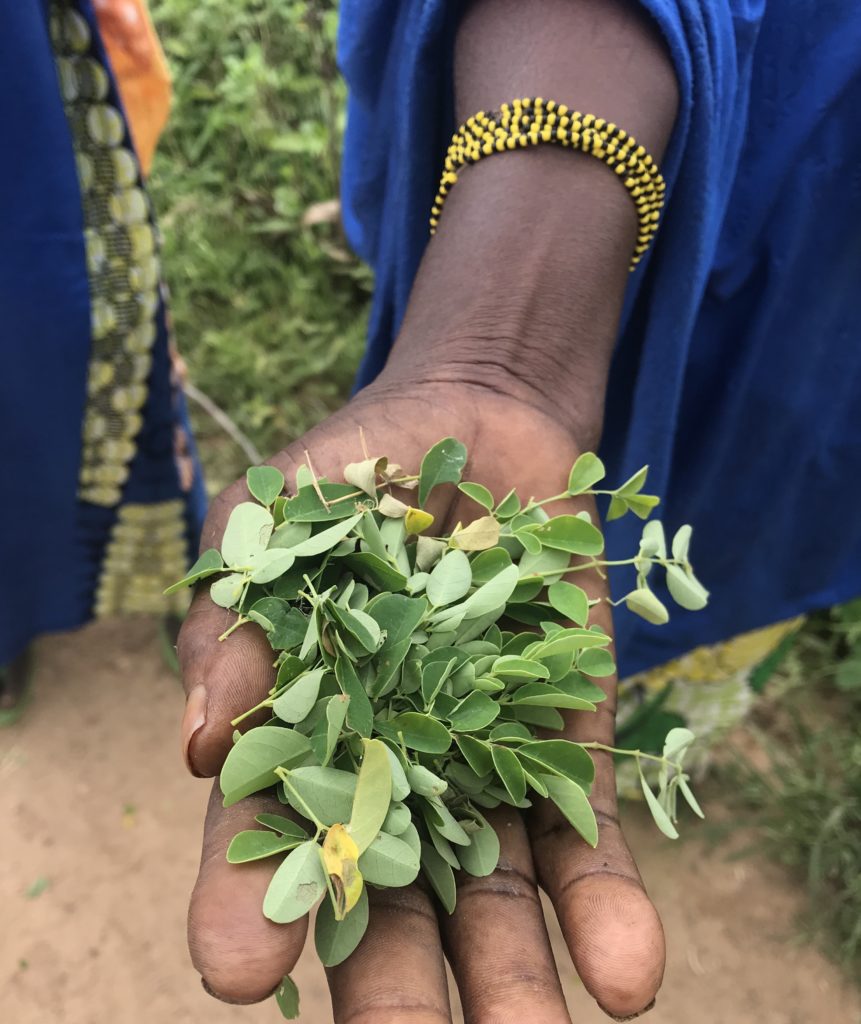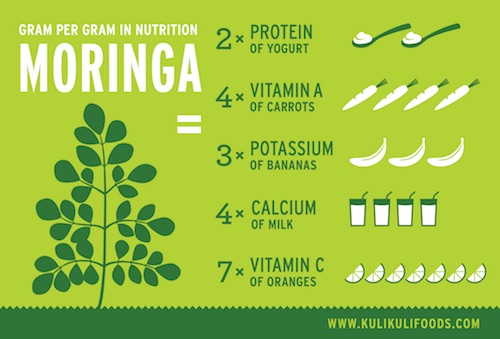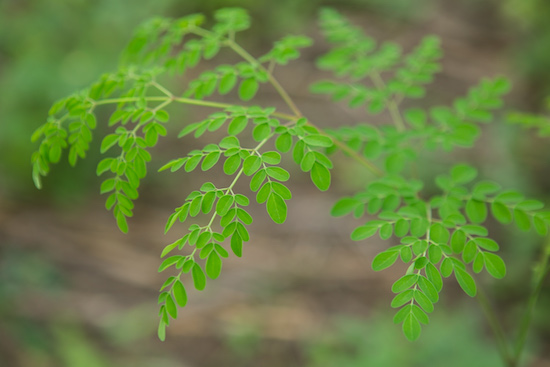What are your favorite superfoods? Is it acai, chia, or yerba mate? Or, maybe moringa? Yes, moringa! It is a super green more nutritious than kale, and is often referred to as the next superfood.
Moringa is considered the most nutrient-dense green on the planet, and this week we take the time to discuss moringa with Lisa Curtis, founder/CEO of Kuli Kuli, America’s leading moringa brand.
Family Eats: Please tell us a bit about the moringa category, how it is growing, and how it fits in with today’s consumer trends.
Lisa Curtis: Moringa is growing faster than any other superfood within the functional food category. A Hartman Group report a few years ago showed that the number one diet change that Americans want to make is to eat more greens. We’ve seen this in the rise of green juices, green smoothies and also in the rise of moringa, arguably the most nutrient-dense green on the planet. People often discover our Pure Organic Moringa Powder first and start adding it into their smoothies. They notice how good it makes them feel and read more about it and realize that moringa is a nutritious and convenient green that they can use in everything from smoothies to oatmeal, sauces and even baked goods. They’ll find our Moringa Superfood Bars, Green Smoothie Mixes and Green Energy Shots as even more convenient ways to increase their moringa intake.
FE: Not all are created equal, how can consumers tell the difference?
LC: There are some differences that are evident — Kuli Kuli’s moringa is a richer green than most other moringa powders and it has a less bitter taste. Unfortunately its hard for consumers to detect heavy metals and organic fraud, which are challenges that the moringa industry is facing. As a general rule with supplements, it’s best to buy from reputable brands that you trust rather than just the cheapest powder on Amazon.
FE: Which is the best way to consume moringa? i.e. does the way you consume it affect its efficacy?
LC: Moringa powder is the most powerful way to consume moringa, though for some people the earthy flavor can be a turn-off. The challenge with tea is that you’re boiling out most of the nutrients when you expose the leaves to heat. Capsules are great but you have to swallow a lot of pills to feel an effect.
FE: How much is a good amount each day?
LC: Depending on your body size and usage needs, 2.5 – 10 grams per day is generally good. The higher end of that spectrum is often for people who are using moringa for its anti-inflammatory, detoxification or other medicinal purposes.
FE: I’ve seen suggested uses to include sprinkling on cereal, using in smoothies, as tea – what is the full spectrum of uses for food; can you bake with moringa?
LC: Moringa is a convenient supergreen that you can use in a lot of different ways. It mixes well into smoothies, oatmeal, sauces or even baked goods. Use it the way you would use matcha or spinach and start with a small amount and add to taste.
FE: Finally, anything about Kuli Kuli you would like to add . . .
LC: Moringa is one of the most nutrient-dense plants on the planet. The leaves of the Moringa tree are packed with protein, essential amino acids, 27 vitamins and 46 antioxidants. Recent research has shown that moringa contains a multitude of medicinal benefits, including anti-inflammatory properties that rival those of turmeric. Named the top wellness trend of 2018 by Good Morning Americaand the Sterling Rice Group, moringa is an extremely versatile and nutritious super green that can be blended into smoothies, baked into cookies and cakes; sprinkled over savory dishes, or mixed into sauces and soups.
As the world’s premier moringa brand, Kuli Kuli sources only the freshest moringa leaves and maintains strict quality control standards. Hand harvested from family farmers and women’s’ cooperatives in rural areas, Kuli Kuli’s moringa provides livelihoods to farmers around the world. In the same way that Sambazon introduced acai, Mama Chia introduced chia seeds and Guayaki introduced yerba mate, Kuli Kuli is introducing moringa to the US.









